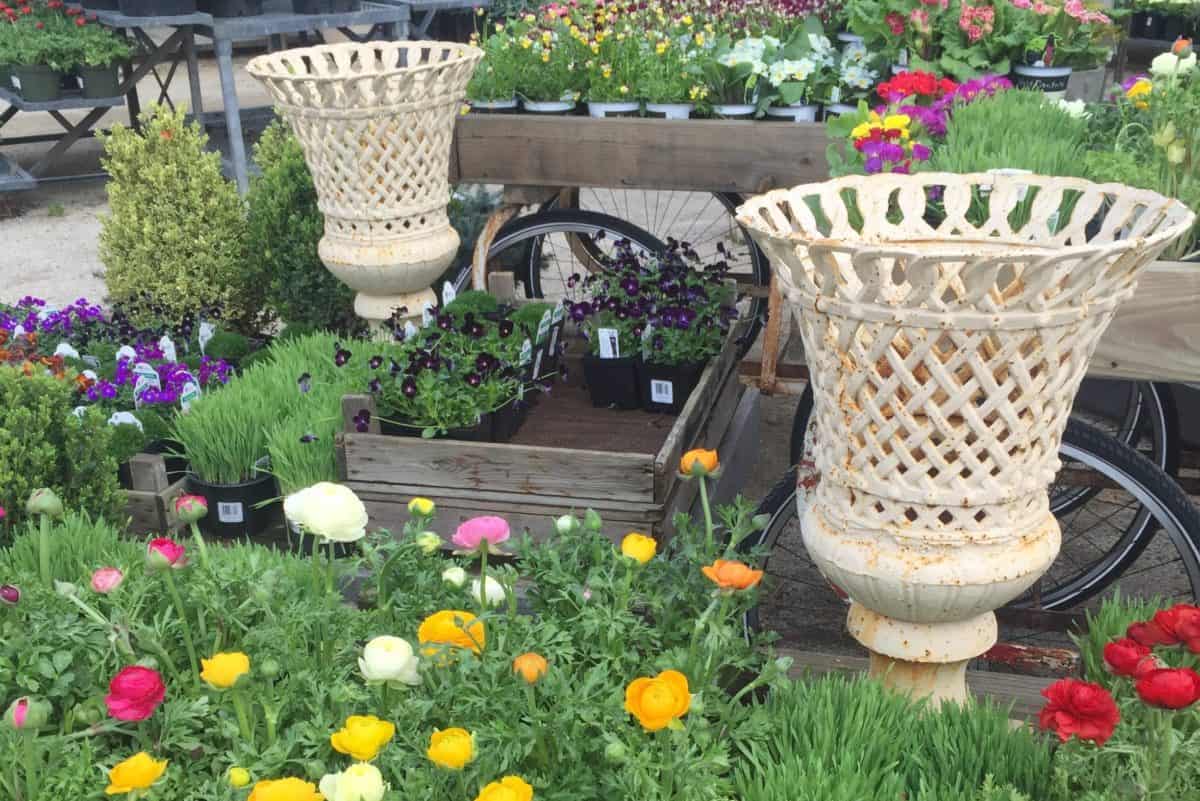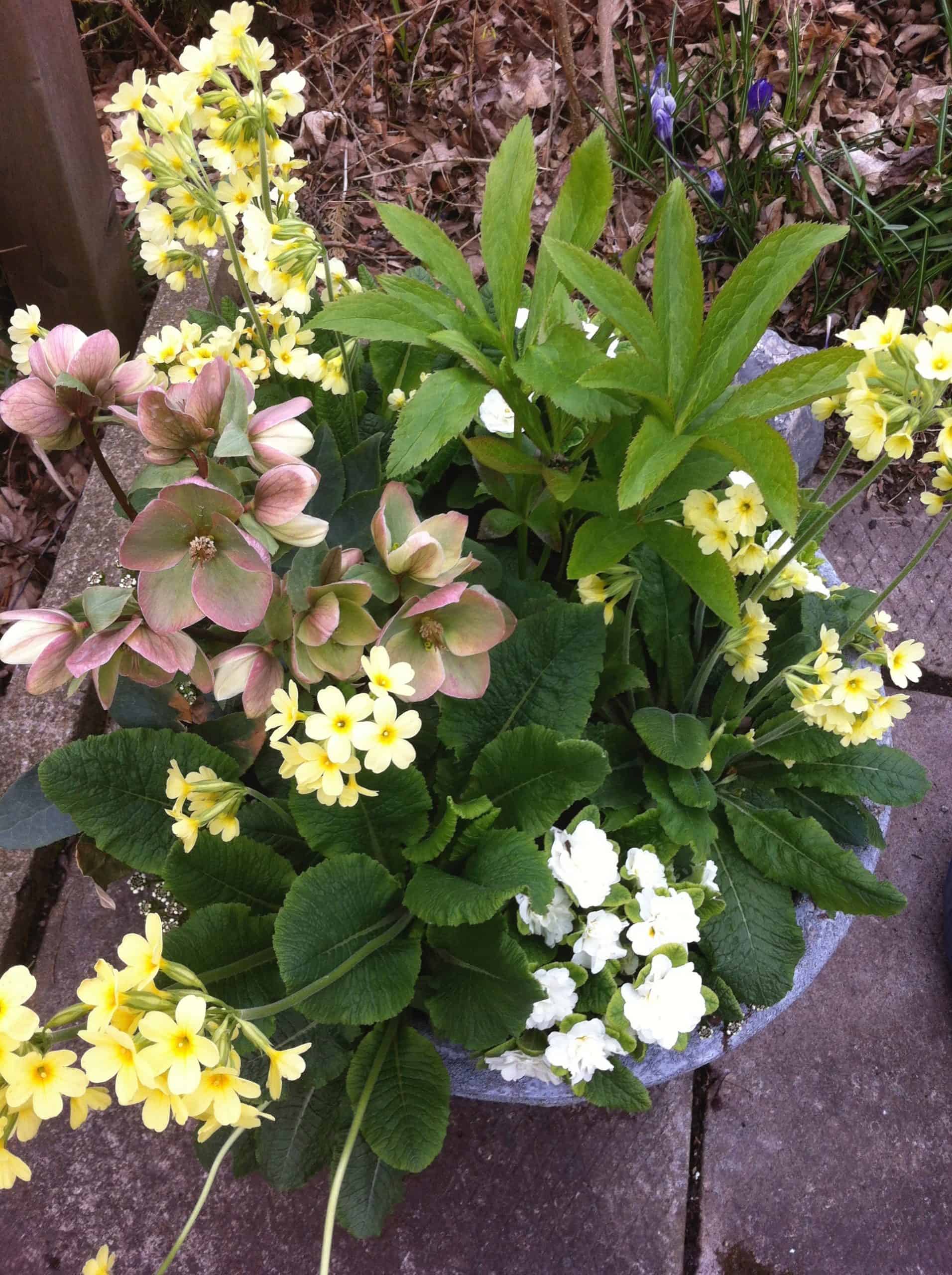
If you’re keen to start gardening, but your soil is too cold and damp for digging, consider potting up a spring container instead. Depending on the weather, a few spring containers planted with beautiful, cold-tolerant plants now will give you several weeks of colour until it’s time to replant them for the summer, while satisfying your need to get your hands in some soil.
Spring bulbs are a logical choice, and many garden centres have pots of forced hyacinths, tulips and daffodils, along with minor bulbs of crocus and muscari, in bloom now. Choose specimens just beginning to bloom — these will give you a longer show.
Forced bulbs can be planted one of two ways:
- Carefully remove the clumps of bulbs and replant them in a container filled with moist potting soil. Don’t be afraid of planting close; this is a short-term display.
- Leave the bulbs in their plastic grow pots and wedge the pots into a large decorative container. Camouflage the plastic rims with a layer of decorative sphagnum moss and check each individual pot when watering.
People often ask if forced bulbs can be replanted in the garden after they’ve finished blooming. Yes, but with several caveats. These bulbs are exhausted and depleted; they may put forth a flower or two next year or maybe none at all. I’m not sure the time and effort to replant basic bulbs, such as King Alfred daffodils, crocus and muscari, is worth doing when there are so many other tasks to accomplish in the spring. However, if you decide to give it a try, remove the faded blooms and let foliage ripen as you would with any spring bulb. Replant the bulbs in a suitable spot and water them in.

Colourful pansies and violas are readily available now, too. They may bow their heads under a surprise snowfall, but usually perk up after it melts. Most new varieties are fairly heat tolerant, too, so if you plant a spring container with just pansies, you may find it keeps going until midsummer. Deadhead frequently—allowing pansies to set seed prompts them to stop blooming.
If you’re lucky enough to find pots of ranunculus, adding one or two to a container combo ups the wow factor. These come in rich shades of rose, coral, apricot and cream, and each bloom seems to carry hundreds of paper-thin petals. Ranunculus aren’t winter hardy in most of Canada, meaning they don’t overwinter in freezing temperatures.
Primroses are spring-blooming perennials, hardy to Zone 5, and can be planted out in the garden in semi-shade later. The most common colours are yellow, white, pink, red and purple, but there are some more unusual double-flowering or softer bicolour options that add variety to a mixed container.

Finally, check out the other perennials being delivered to your garden centre at this time of year. Many are in bloom now and can inject more colour and texture to a spring container combination. Long-blooming hellebores have tall flower stems and attractive, leathery foliage. The foliage of heucheras come in striking shades of silver, burgundy and rose, some with interesting splotches and veining. Perennial ferns and ornamental grasses may be leafing out and ready to add height to your design.
For a trailing specimen at the edge of your spring container, look to alpines, most of which put on a show in early spring. (There’s always ubiquitous English ivy, which tolerates low temperatures; some varieties feature variegated or unusually shaped leaves.)
Hardy perennials may be pricier options than forced tulips or a cell pack of pansies, but once summer arrives, they can be transplanted into your perennial borders where they can live on for seasons to come.
As is the case with any plants growing in a container, use potting soil and a container with drainage at the bottom. If nighttime temperatures plummet significantly or a snow fall is predicted, move your pot into a sheltered area or throw a light covering overtop for protection. Usually, supplemental feeding isn’t needed. Spring containers are short-term beauties to welcome a new year in the garden.

I’ve never been very proud of my efforts at container gardening but you have given me some great ideas – thank you!
Dear Garden Making:
Thank you for your cheery article on spring containers. This was a bright spot for me having just moved from a full yard grown garden for the past forty years to a 7 x10 patio. However, a smaller display does not diminish the thrill of guiding plants to fruition,
Keep up your excellent work!
John Hogarth, St. Albert, AB
Thanks for these great ideas Beckie. I’m looking forward to scratching my gardening itch, and a Spring container might just do the trick.
I was so sorry to see the end of Canadian Gardening. I loved it! I started in 2010 and still consider myself a novice,. But i love using a colour pallete and boy had i had to learn about sun, part sun and shade and how to put my impetuious choices to bed. I loved all the information on different species and hope to live up to having indigenous species and all the rest. This has been a new artistic outlet for a retired ballerina!
Thank you, Becky! This is just what I needed at this time of year!